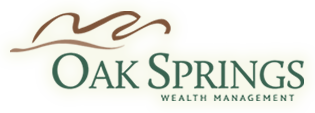We’re half way through 2018. Amazing! Second quarter was not the jolt we experienced in the 2nd half of the 1st quarter but more of a give and take. Equities, especially emerging markets, pulled back. Bond proxy positions such as real estate and utilities rebounded. The factors ruling over the market continued to be the Federal Reserve, the global economy, and the threat of a trade war. All negatives to the stock market.
The stock market rose through the Obama administration primarily on the back of free money and a zero-interest rate set by the Federal Reserve. The Fed has raised rates twice this year and is promising two more rate hikes before the year is out. That means the prime rate started 2018 at 4.50% and will end the year at 5.50%. The Fed members are looking at a tightening labor market, increasing cost of labor and inflation beginning to roll through consumer prices. Their response is to tighten the money supply to ward off runaway inflation. The difficulty for the Fed is knowing when they have tightened to the point that the economy begins to pull back into a recession. History shows the Fed is not good at knowing that tipping point.
While the US economy appears to be full steam ahead, the rest of the world economy has been slipping in the opposite direction. At the beginning of the year there was a great deal of excitement over a global economy moving in tandem and in the right direction. That came to a screeching halt when President Trump announced an effort to reduce the barriers being imposed by our trading partners against US businesses, as well as China’s theft of our intellectual property. The problem is a real one and has been around and known for many years. Whether the announced tariff hikes will lead to a full-blown trade war is not known. But the effects of the face-off over tariffs is taking a toll on the global economy outside of the US. The European Union’s plans to begin hiking interest rates and curtailing their bond buying program came to a screeching halt. China’s economy has perhaps been hit the hardest. The government has been forced to inject liquidity into their banking system even while the Chinese currency has reached its lowest value against the dollar in over a year. Foreign investment into China has slowed drastically. The response of the Europeans and the Chinese has been to threaten to hike tariffs on US goods. The Chinese have also stepped up their theft of intellectual property. The threat of tightened trade has had a negative impact on the so-called emerging markets. As the value of the dollar has marched higher against all other world currencies the strong dollar has dampened the value of commodities (the economic driver in many countries) and made the repayment of dollar denominated debt more difficult.
Looking further down the road, there is potential for real market hurdles. One forecasting tool sending warning signs is the interest rate spread between the 2-year and the 10-year US treasuries. The desire is that the longer bond have an interest rate at least 100 basis points higher than the shorter maturity 2-year treasury. That spread is now 30 basis points and tightening. A flatter yield curve is considered a predictor of recession. Since the end of January, the Oak Springs’ portfolio has been in a hold position. It is our belief that any positive news concerning trade will fuel a market rally. Whether that will take us back to the January highs is not known. The next changes to the portfolio are anticipated to be trimming positions to create more cash and to reduce exposure.
Categories
Archives
- April 2025
- January 2025
- October 2024
- July 2024
- April 2024
- January 2024
- October 2023
- July 2023
- April 2023
- January 2023
- October 2022
- July 2022
- May 2022
- January 2022
- October 2021
- July 2021
- January 2021
- October 2020
- April 2020
- January 2020
- October 2019
- July 2019
- April 2019
- January 2019
- October 2018
- July 2018
- April 2018
- February 2018
- October 2017
- July 2017
- April 2017
- January 2017
- November 2016
- September 2016
- July 2016
- May 2016
- February 2016
- January 2016
- December 2015
- November 2015
- November 2014
- August 2014
- July 2014
- June 2014
- May 2014
- April 2014
- March 2014
- October 2013
